The KINGSTON UNIVERSITY STYLOPHONE ORCHESTRA is believed to be the only ensemble of its kind in the world.
From stylus to stardust, the KINGSTON UNIVERSITY STYLOPHONE ORCHESTRA was created by Dr Leah Kardos in early 2019 after producer Tony Visconti, whose studio is based at the University, introduced her to Dubreq, makers of the Stylophone who subsequently donated a collection of new and vintage instruments.
Directed and produced in the majority by Kardos, KUSO’s debut album ‘Stylophonika’ is a fine tribute to the instrument that also explores its strange future possibilities with love and affection, making the most of its component vibrato and glide for a unique collective noise.
Present and past members of the ensemble include Ershad Alamgir, Louis Bartell, Harry Green, Sydney Kaster, George Reid, Cian Ryan-Morgan, Arte Spyropoulou, Estelle Taylor-Noel, Isabella van Elferen, Zuzanna Wężyk, Jess Aslan, Mari Dangerfield, Jack Holland and Billy Wilson.
As well as the original Stylophone series, newer instruments from the Dubreq family like the Gen X-1, Gen R-8 and Beatbox, along with Korg Volca sample sequencers, Theremins, Omnichords, a Moog Grandmother and the human voice feature on ‘Stylophonika’.
Half the album pays homage to electronic music’s pioneers via delightful cover versions of David Bowie, Brian Eno, Wendy Carlos and Jean-Michel Jarre act as entry points while the other half comprises of the original material.
Leah Kardos spoke to ELECTRICITYCLUB.CO.UK about how the KINGSTON UNIVERSITY STYLOPHONE ORCHESTRA took shape and in challenging circumstances, recorded a highly enjoyable debut long player…
Can you remember the first time you heard a Stylophone? I love how some describe it as sounding like “a wasp being cut in half”!
It would have been on the Bowie song ‘Space Oddity’ for sure. I actually didn’t get to play one until I was in my 30s. But I remember being immediately enamoured with the little things. It’s a buzzy sound for sure, but also one that’s capable of stirring emotion.
The first Stylophones had the music notes assigned to each “key” but this was changed to the numbering system quite soon after. Have you any thoughts or views as to what is the better system for musical beginners?
Hmm… the note names are probably better for music educational purposes.
But the numbers are more immediately accessible for learning, or following along to a known tune quite quickly. As to what might be better for beginners, I guess the system that removes any barriers to access and engagement would be preferable. The instrument is already hugely accessible, being the first ‘pocket’ synth and all. To this day, if you search for synthesisers by price, Stylophones are still the cheapest / easiest around.
As a music academic, how do you feel about some people’s claim that knowledge of music notation and theory is unnecessary?
When it comes to notation, I think it depends on the music and the situation. In some situations notation is not needed – for example, if I was in a band that was improvising, or working in commonly understood structures and forms, or if I was working in electronica with my own sequencing systems, etc. Those of us in the orchestra need it, as we are performing set written arrangements that we perform live together. Knowledge of theory is often intuitively developed, I feel. Theory mostly just explains the reasons why and how certain musical devices work, and we can pick this knowledge up in many different ways – through creating, playing, listening / exposure… and of course by analysing and unpacking it.
How did you come to be introduced to the Stylophone as a modern entity and consider it as a future compositional tool?
It was really by chance. Manufacturer Dubreq got in touch with me, via Tony Visconti, and said they wanted to donate instruments to the university. My first thought when I saw them was: would an ensemble be possible? The limitations of the instruments, in particular, I found really enticing.
Was the orchestra initially for live performance solely? Tuning up must be fun? Is it like a school recorder class?
Tuning up is a necessary ceremony every time we meet, for sure! We use tuning apps on our phones to tune. And of course being analogue synths, the tuning does shift over time, and move about between settings. The upshot is that the group have really become adept at identifying resonance and when something is out of tune slightly.
And, yes, the group was initially about performing live – we only formed in 2019 and that year the goal was to become good enough to play in front of people. We were also developing our sound quite slowly… it was a process of discovery and learning what we could achieve sonically together. We learned a lot together that year! There are some vlogs from our very first few rehearsals on YouTube and we do sound very ropey, much like a school recorder class, yes!
How and when did the idea of recording an album become a realistic proposition, with all the challenges going on?
The album was a way for the group to stay active during lockdown. That’s how the idea started. We met in September 2020 over Zoom and talked about it. I asked the group if they were up for working remotely on such a thing and we all agreed it would be a good project for us to do during the Winter. It was something to keep us busy and distracted during a pretty depressing time.
How did you choose the four cover versions, as each is iconic in its own way?
Some of those tracks were already in our live rotation. ‘An Ending (Ascent)’ was actually the first arrangement we ever worked on and rehearsed, so that had to go in. Similarly we had played ‘Space Oddity’ and ‘Blade Runner (End Titles)’ live so those arrangements were ready to go. We discussed the theme for the album and all settled on this idea of ‘classic’ electronica, since we are an orchestra after all. We asked: “What do orchestras do?”, they play standard repertoire. “So what would be standard rep for a synth orchestra?”. That led us to shortlisting Wendy Carlos and Jarre. We also mooted some John Carpenter and Tangerine Dream, but there wasn’t enough room for everything the group wanted to do.
What was it like to work with Tony Visconti on ‘Space Oddity’?
That was a ‘pinch me’ moment; for me at least, since I’m such a Bowie fan. The session was also around the time of the 50th anniversary of the song itself, so that made it feel extra special. He’s quite magical in the studio; anything is possible when he’s around. He also recorded us as a true ensemble, playing together through the Stylophone speakers at the same time (not multitracked or separated out).
We felt like a genuine little orchestra that day. We even recorded some parts for his upcoming album… We became the first (only?) session Stylo orchestra in the world. This was also the first time we sang together in choir mode – which of course opened up a lot of possibilities for us moving forward. It was such a great and inspiring day for us.
On ‘Music For The Funeral Of Queen Mary’ from ‘A Clockwork Orange’, you have the Stylophones sitting with Moogs and they sound wonderfully unsettling?
The combination is fun, I think. We’ve never had Moogs in the orchestra when we’re playing live. But George Reid was a member of the orchestra for the Tony session, and through the remote recording process he came back to us with some amazing Moog takes that we absolutely had to use. He did a brilliant job of treading the line between respectful homage and fresh creativity.
When did you think original compositions would work well within the context of the album? Had this always been part of the concept?
As we were working over the winter of 2020/21, I left space in our schedule for new music. I opened it up to the group – basically saying “If you want to write something for us, I’ll arrange it! Let me know…”; Zuzanna Wężyk responded with ‘Akoustiki’, but no-one else did; students are busy and people had their priorities. So I felt a Harold Budd tribute was appropriate, and I had a Stylophone piece of my own ‘Brundle Beat’ ready to go, so we went with that. I wasn’t sure about including it because a version of it was out on my own 2020 album ‘Bird Rib’, but Gavin at the label Spun Out Of Control was keen on the orchestra version, so it went in at the last minute.
I’m glad we have some original material on the record as it shows the creative and expressive potential of the group. We can face the future as well as looking backwards to the past!
‘Olancha Goodbye’ pays tribute to the late Harold Budd?
Yeah, it’s inspired by his interlude ‘Olancha Farewell’ (from his 1986 album ‘Lovely Thunder’). I interpolated the theme and built it in a different direction. The gentleness of Budd’s music was something I wanted to try and explore within the brittle Stylophone sounds – could we blend voices with synth tones and create something just as ethereal? That’s where I started with that.
In Visconti Studio we have some beautiful reverbs available, so it was nice to extend and stretch the sound that way. Cian Ryan-Morgan, the Orchestra member who also mixed the project, suggested we re-amplify the sound through the resonant soundboards of the studio’s grand pianos… so we blasted it through them, while one of us held the sustain pedals down. The sound kind of balloons and shimmers through it. Again, it felt fitting for a Budd tribute, since so much of his music is focused on atmospheric piano tones.
What sort of challenges did the Stylophones present in being recorded within a studio environment?
Aside from tuning issues, not many. It was easier to manage with the studio recorded audio than it was to deal with the variously remotely recorded bits and pieces that I was getting from the group. There was lots of Google Drive file swapping going on, and some people were recording with their phones, others with posh set ups. In the end I adopted a ‘more is more’ attitude and threw everything together, often using every version of people’s multiple takes. The results I think are pretty epic; I was so pleased.
Why do you think the charm of the Stylophone still endures?
I think it’s because the instrument survives intact and virtually unchanged since 1968. It sounds retro-futuristic, crude and sweet. There’s something quite vulnerable and a little naïve about the sound. Above all, it’s an instantly recognisable voice, and in the hands of creative musicians can be beautiful and evocative and iconic.
Do you have a particular favourite Stylophone model, whether vintage or modern?
I really like the current ‘all analogue’ version of the instrument. The sound is warmer and rounder than the previous model. Of the vintage units I really adore the 350s – the range and timbral possibilities can’t be beat. It’s definitely the best sounding Stylophone that ever existed… in my humble opinion, anyway.
Will there be a second album? Are there any conceptual ideas you would like to try?
We had no idea how the debut would be received – whether our record would be laughed at or ignored or whatever.
Just in terms of the experience from our end, I know that everyone involved really enjoyed the process of making the record, from planning the track list, checking mixes to getting our photos taken and excitedly discussing ideas about the cover art. I’m sure we will all be keen on doing it again sometime soon. As for a theme, we’d need to discuss it! I’d never want to decide anything without the whole group’s input.
What is next for you? You have book about David Bowie coming out?
Yes, my Bowie book ‘Blackstar Theory’ is coming out around the same time as the ‘Stylophonika’ vinyl, both things I was working on during the lockdown months. It’s all about Bowie’s last works from 2013-2016 – a topic I’ve been obsessed with ever since Bowie passed away in 2016. Other than that, I have a music project with saxophonist Lara James that is all about feminine psychogeography, using field recordings from public places that have been historically unsafe for women. Then, I’m hoping (pandemic willing) that the Stylophone Orchestra can get out and do some gigs in the Spring.
ELECTRICITYCLUB.CO.UK gives its sincerest thanks to Leah Kardos
Special thanks to Gavin Stoker at Spun Out Of Control
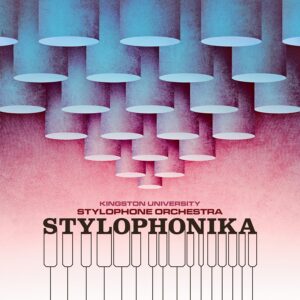 ‘Stylophonika’ is released by Spun Out Of Control on 28th January 2022 as a limited edition Protein Pills Purple or Pink & Blue Cosmic Swirl vinyl LP, pre-order from https://spunoutofcontrol.bandcamp.com/album/
‘Stylophonika’ is released by Spun Out Of Control on 28th January 2022 as a limited edition Protein Pills Purple or Pink & Blue Cosmic Swirl vinyl LP, pre-order from https://spunoutofcontrol.bandcamp.com/album/
https://www.facebook.com/styloorch
https://twitter.com/LeahKardos
https://www.instagram.com/styloorch/
Text and Interview by Chi Ming Lai
30th December 2021

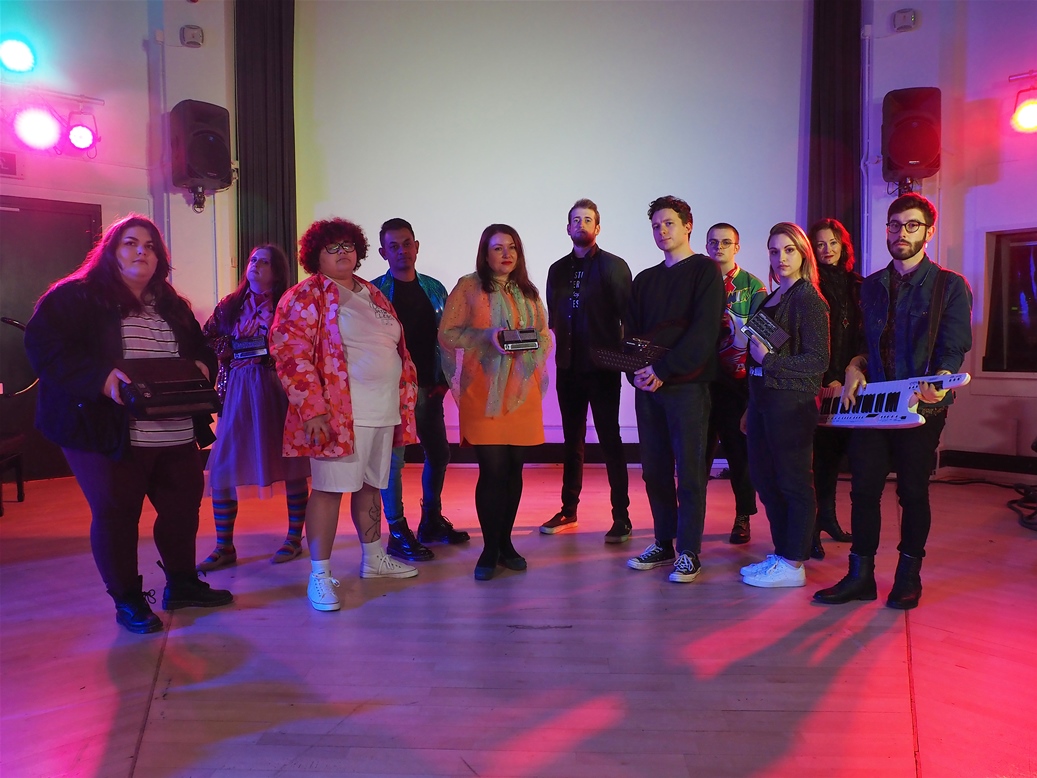
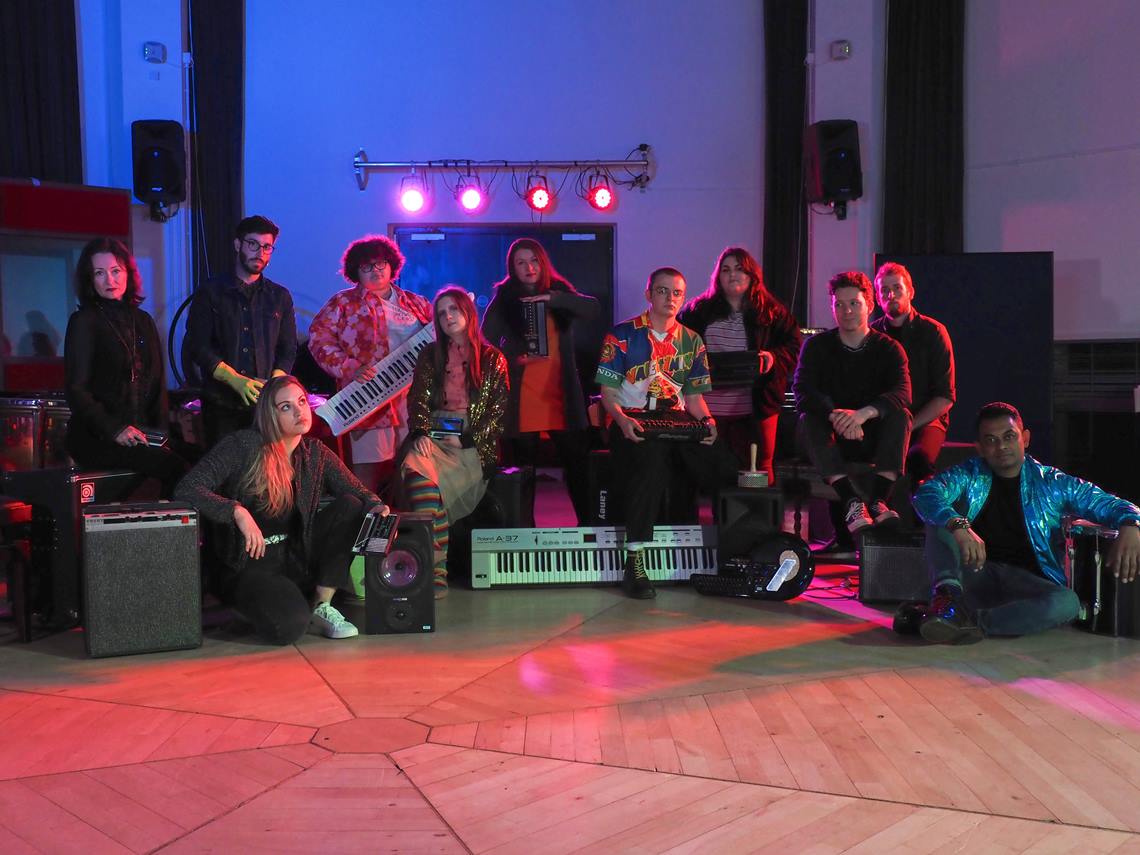
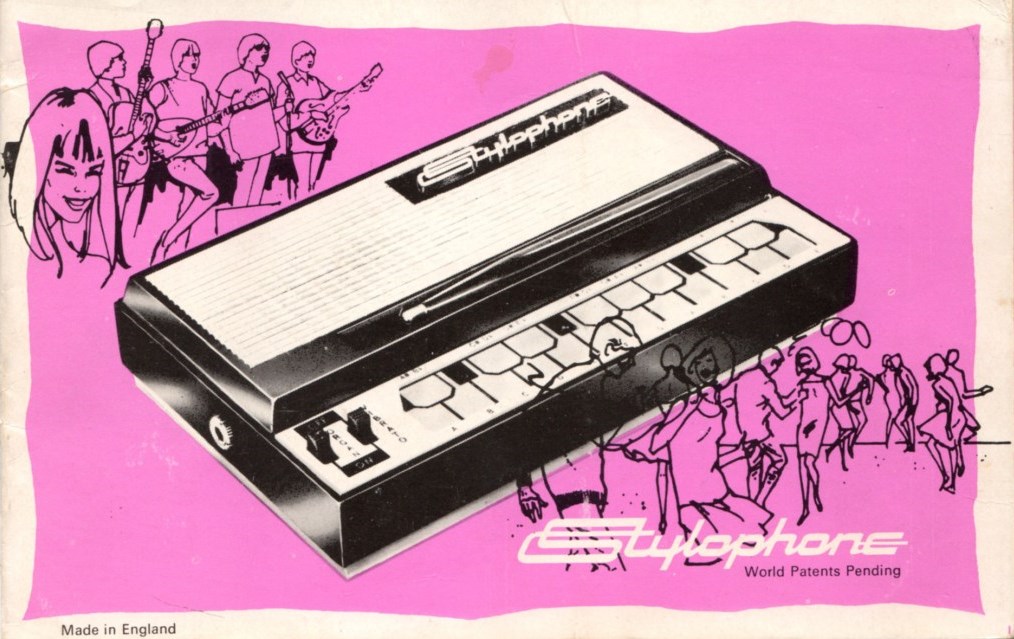
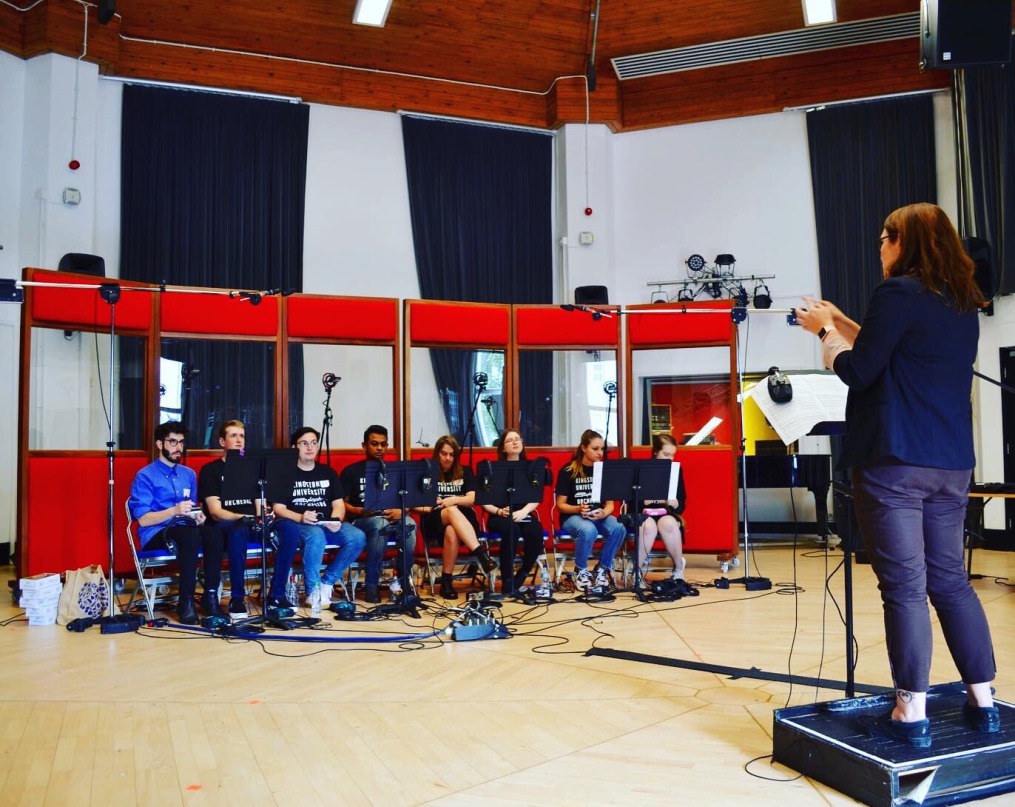
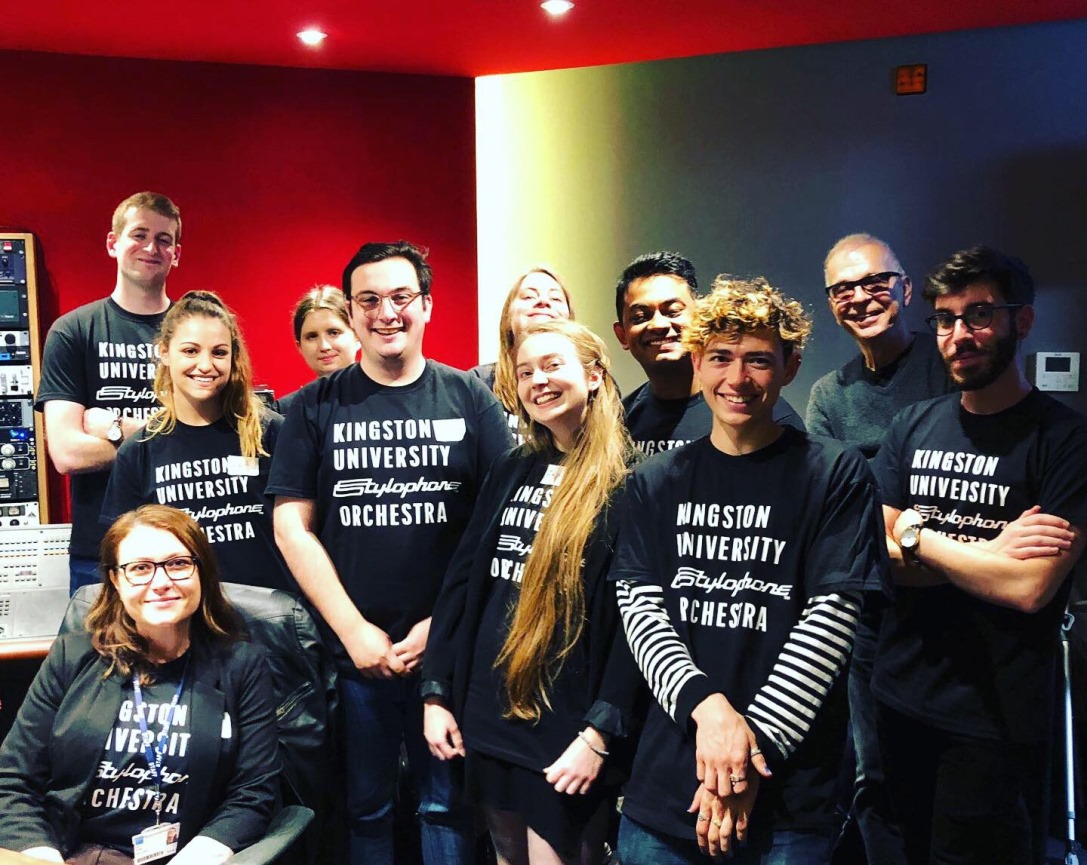
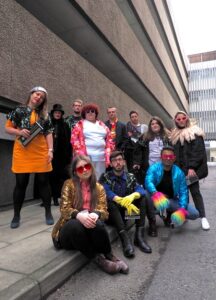
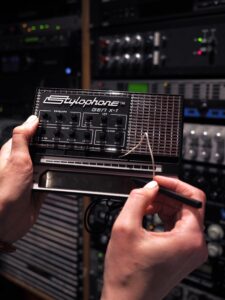
Follow Us!